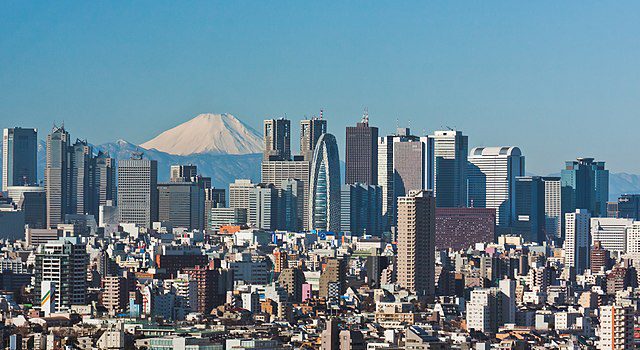30 Fascinating Facts About Tokyo
Japan is a fantastic city in general. So it seems to reason that its capital city would be as enthralling! Did you know Tokyo is regarded as a vibrant and forward-thinking metropolis? Read on and you will surely find out. This city is ranked among the most liveable cities in the world, not to leave out its towering skyscrapers, varied streets, and award-winning food scene. While here you should consider exploring Ginza which is famous for its high-end retailers, Asakusa has the city’s largest Buddhist temple, Senso-ji, and Shibuya has the world’s busiest pedestrian crossing.
Tokyo is readily explored on foot, but its efficient public transportation system winds its way across the city, flawlessly connecting each location. Think you know everything there is to know about Japan’s vibrant capital? We guarantee you haven’t encountered some of these fascinating facts about Tokyo before, from robot hotels to the world’s busiest junction.
Read also; Top 10 Free Things to do in Tokyo
1. Tokyo was a modest fishing hamlet called Edo
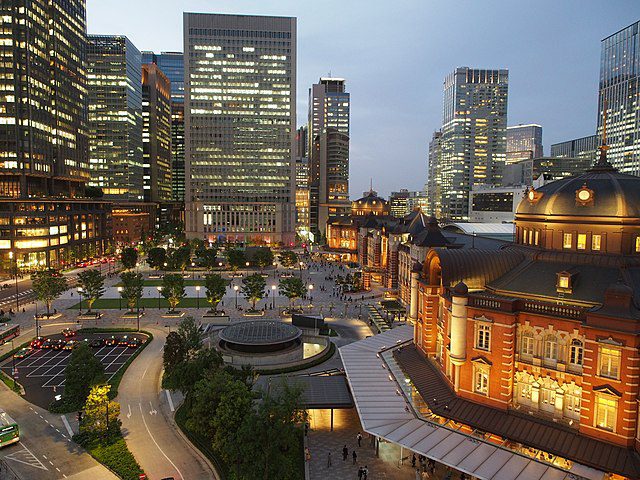
Kestrel, CC BY-SA 4.0, via Wikimedia Commons
It’s difficult to think that Tokyo was once a little fishing hamlet. Tokyo’s history begins roughly 400 years ago when it was a little fishing community called Edo. Kyoto was Japan’s imperial capital at the time. The population grew slowly until the Tokugawa Shogunate was created.
This Shogunate was the most powerful administration in Japanese history, governing the Emperor as well as all religious institutions. The government continued to function for several centuries until Yoshinobu, the final Shogun, surrendered to imperial forces in 1868. Soon after, the Emperor officially transferred the capital from Kyoto to Edo and dubbed it Tokyo, or the ‘eastern capital.’ Since then, it has served as the administrative center.
2. Tokyo is well-known for its superior technologies
Japan has historically been a forerunner in terms of technology acceptance and innovation. They were, for example, the second country after Canada to develop a national AI plan, which was unveiled in March 2017. Tokyo is at the epicenter of this.
Bullet trains, robot waiters, and even space-age toilets that play ‘privacy’ noises to cover other unpleasant sounds are all commonplace in this futuristic city. However, the dedication to embracing new technologies extends beyond such superficial benefits. The city is a welcoming environment for both established technology enterprises and startups.
3. The city boasts a well-developed and effective public transit system

katorisi, CC BY-SA 3.0, via Wikimedia Commons
Tokyo takes pleasure in having one of the best transportation networks. Foreigners and locals alike might quickly become disoriented in the city’s busy streets and public transportation stations. Tokyo features one of the world’s most extensive and unrivaled metropolitan transportation systems.
It is the principal form of transportation in the city, made especially popular by inexpensive fares and a large number of conveniently positioned stations. Buses are an excellent alternate transport choice for individuals who want to avoid the “commuter hell” of trains. The fare is reasonably priced, and there is little overcrowding. Interns who need to get somewhere quickly may prefer to take a taxi.
Drivers in Tokyo are renowned to be trustworthy and seldom take advantage of their clients, giving further protection for passengers, particularly those new to the nation. Motorcycles and bikes can be an efficient mode of transportation in the city, especially when it comes to parking or maneuvering between cars trapped in traffic.
4. Shibuya Crossing in Tokyo is one of the world’s busiest pedestrian crossroads
Shibuya Crossing is well known for the incredible’scamble’ that occurs every time the traffic lights change red, causing all vehicles in all directions to come to a halt and allowing a massive wave of pedestrians to surge into the crossroads for a few moments.
The second level of the massive Starbucks on the north side of the crossing, in the Tsutaya building, is a popular site to witness this relaxing flood of pedestrians. The floor-to-ceiling windows provide an excellent viewing platform as well as a perfect location for photography and videos.
The massive digital advertising spots around the crossing also make it a famous photographic location in Tokyo, and the crossroads is regularly packed with both locals and visitors shooting pictures against the beautiful backdrop.
5. The world’s largest metropolitan fish market(Tsukiji Market) is located in Tokyo
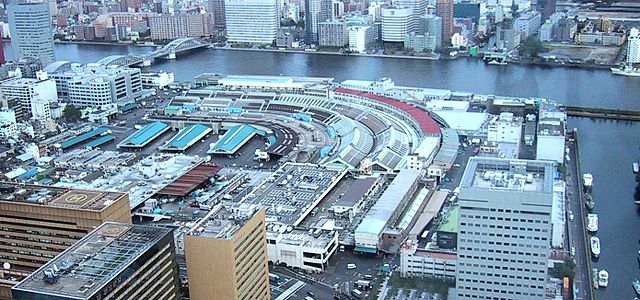
Chris 73 / Wikimedia Commons, CC BY-SA 3.0, via Wikimedia Commons
The history of the Tsukiji Market began in the 16th century when Tokugawa Ieyasu, the first shogun of the Tokugawa shogunate established Edo as Japan’s capital. Tokugawa Ieyasu brought fishermen from Osaka to supply the Edo palace with fish. This fisherman began selling what was left over along the Nihonbashi bridge, giving rise to the first Uogashi market. As the population grew and demand increased, the Uogashi stalls evolved into a full-fledged market.
6. Tokyo is home to a robot hotel
In Japan, two hotels are currently run almost entirely by robots. H.I.S. Co., a low-cost travel service, owns Hen’na Hotels. Henn-na Hotel is the world’s first hotel manned by Guinness-registered robots, utilizing cutting-edge technologies. “Henn” means “strange” or “to change” in Japanese. Nagasaki and Tokyo are the locations of the hotels. There are robots to assist you in checking into the hotel, robots to transport your bags to your room, and robots to remove your rubbish. The fish in the lobby tank are also robots.
7. The city boasts a thriving cuisine scene

Adrian Grycuk, CC BY-SA 3.0 PL, via Wikimedia Commons
With a rich culinary legacy and a myriad of eateries, Tokyo has earned a well-deserved reputation as a food lover’s dream destination. The food scene is distinguished by a healthy respect for heritage combined with an eagerness to explore. Furthermore, Japanese chefs often prioritize using the freshest ingredients and producing a feast for both the eyes and the tongue, with meals that look as delicious as they taste. Tokyo’s hotel and food industries, notably the city’s small business owners, are anticipating the return of overseas travelers.
Read also; 10 Best non-touristy restaurants in Tokyo
8. The Tokyo Sky Tree is the tallest freestanding structure in the world
Tokyo Skytree is the world’s tallest skyscraper (634m), and the third tallest structure after Malaysia’s Merdeka 118 and Dubai’s Burj Khalifa. Tourists can visit the Sumida Aquarium, Pokemon Center, limited edition Gachapons, retail malls, restaurants, and cafes in the tower. You can go all the way up to Level 350 and Level 450 using the combo ticket and take in the view of the sunset over Mount Fuji, which is stunning. Floor 340 has a Tembo Deck; remember to glance down the vista via the glass flooring. You can also shoot pictures here.
9. Sumo wrestling is a popular traditional sport in Tokyo

Eckhard Pecher User:Arcimboldo, CC BY 3.0, via Wikimedia Commons
Sumo wrestling is a traditional Japanese sport with a rich cultural past. The sport features two wrestlers, or rikishi, facing off in a circular ring called a dohyo. To begin, the wrestlers enter the ring wearing little more than a mawashi, a loincloth, and a pair of sandals. Wrestlers undertake Shinto-related rituals before the match, such as tossing salt into the ring to purify and terrify their opponent. They then square up in the middle of the ring, with the referee, or gyoji, on hand to call the match.
10. Tokyo train stations use lights to reduce suicides
Concerned about an increase in people jumping in front of trains, Tokyo railway operators installed special blue lights above station platforms in the hopes that they may have a relaxing effect and curb suicides. According to one study, the suicide rate plummeted by 84% between the time of installation in 2009 and 2013.
11. Tokyo features a plethora of museums and art galleries
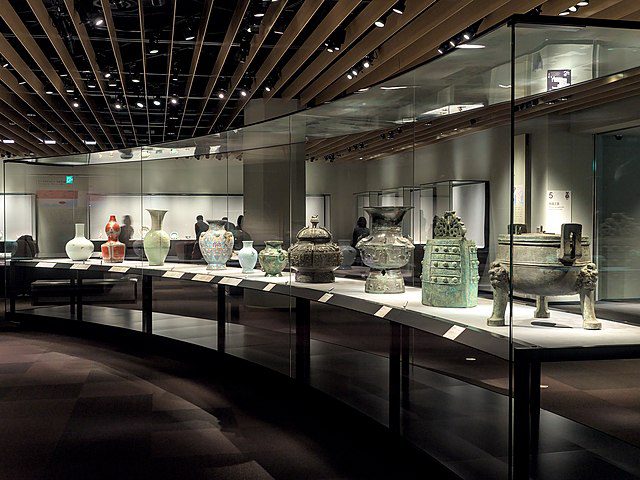
Kestrel, CC BY-SA 4.0, via Wikimedia Commons
As you go through Tokyo’s meandering streets small lanes adorned with lanterns, crowded sidewalks beneath neon signs, and gardens dotted with cotton-candy pink cherry blossom trees you’re certain to come across some of the city’s best art. Tokyo is home to a plethora of world-class art museums and galleries, displaying anything from cutting-edge, contemporary displays to ancient Japanese treasures that are unrivaled. From massive Instagrammable digital art complexes to low-key glimpses into Tokyo’s local art culture on the outskirts, this creative metropolis has something for every type of art fan.
12. The Tokyo Stock Exchange (TSE) is the largest stock exchange in Japan
The Tokyo Stock Exchange (TSE) is Japan’s primary stock exchange, based in Tokyo, and one of the world’s largest securities marketplaces. The exchange was originally formed in 1878 to create a market for the trading of freshly issued government bonds to former samurai. Initially, government bonds, gold, and silver currencies dominated the exchange’s trade, but with Japan’s economic expansion and modernization, stock trading had come to prevail by the 1920s.
13. Tokyo boasts a vast network of parks and natural spaces

Syced, CC0, via Wikimedia Commons
Tokyo is a city with numerous beautiful gardens and vast parks. Some of Tokyo’s most iconic open spaces are Ueno Park, Yoyogi Park, Shinjuku Gyoen, and Hibiya Park, where Tokyoites gather on weekends and public holidays to relax, picnic, or pursue their various hobbies.
Many of these gardens reverted to government possession after the fall of Tokugawa power in 1868, and after World War II, all of them were progressively taken over by Tokyo city authorities and fully opened to the public. When the gardens of Tokyo’s many hundreds of shrines and temples are added to the mix, Japan’s capital truly has a huge variety of pleasant open areas to adore and enjoy.
Read also; 10 Cheapest Places to Live in Tokyo
14. Tokyo has been destroyed and rebuilt not once
The Great Kanto Earthquake on September 1, 1923, damaged Tokyo, Yokohama, and other cities on the Kanto Plain in southern Honshu. As the earthquake struck around lunchtime, the fires used to cook spread throughout Tokyo’s wooden structures. Huge fires erupted, the asphalt on the streets melted, and 38,000 people were killed in one conflagration in central Tokyo.
As in San Francisco, the water required to extinguish the fire was unreachable owing to earthquake damage. In the end, 33 million square meters of the city were left in ruins. Plans were made to establish a new city with more green spaces and parks, as well as broader streets between buildings following the tragedy. Only the budget available shrank and the new city of Tokyo was developed with more modest ambitions.
15. Tokyo has been listed with the most Michelin-starred restaurants worldwide

Shakher59, CC BY-SA 4.0, via Wikimedia Commons
As of January 2022, Tokyo had 203 restaurants with at least one of the coveted Michelin stars, making it the city with the most of prestigious accolades. Japan dominated the top five, with Osaka coming in third with 96 and Kyoto coming in second with 108 starred establishments (tied with Paris). Three of the most renowned three-star eateries in this city are Kanda, Quintessence, and Jol Robuchon.
16. Tokyo is the most populous metropolitan in the world
When discussing the world’s largest city, it’s necessary to be specific in terms of surface area or the largest by population? While Eeyou Istchee James Bay (Canada) appears to be the winner in terms of surface area, with 335,818 km2, Tokyo appears to be the winner in terms of population. Tokyo set the Guinness record for the most populous city in 2006, with 35.53 million people, more than double the population of New York.
17. Tokyo has top the ranking as the world’s safest city since 2015

nakashi from Chofu, Tokyo, JAPAN, CC BY-SA 2.0, via Wikimedia Commons
Japan has one of the world’s lowest overall crime rates. The Japanese capital is no exception. The low crime rate is most likely due to the fact that the majority of Tokyo citizens are classified as “upper-middle class.” Because tough regions are rare and far between, people often walk home alone very late at night without fear of bodily violence.
Tokyo is densely crowded. There aren’t many cities with so many people where walking about at night and taking public transportation is safe. However, as in any large metropolis, maintaining awareness is essential for staying safe.
18. Tokyo has a world-famous nightlife culture
As the sun goes down, the neon lights turn on, and Tokyo’s after-dark alter ego takes over. Evenings are more relaxed and carefree than their hectic, conformist daytime counterparts, so kick back and let your hair down. From the bright lights and bustle of downtown Shibuya to the sleek skyscrapers and glitzy allure of the Marunouchi and Ginza districts, to late-night art galleries, lively izakaya, fine dining, and alfresco events, Tokyo’s nightlife scene is about more than pubs and clubs—though there are plenty of those as well.
Read also; Best Students Bars in Tokyo
19. Tokyo’s unique culture is reflected in its traditional arts

Korea.net / Korean Culture and Information Service (Photographer name), CC BY-SA 2.0, via Wikimedia Commons
Tokyo is Japan’s cultural capital. Japan established its own distinct culture after being influenced by ethnic Jomon cultures, then by Chinese and Korean influences, then by Greek and Indian influences, and finally by European and American influences. Tokyo’s distinct culture is reflected in traditional arts such as ikebana (flower arranging), origami (making objects by folding paper), and ukiyo-e (woodblock printing); crafts such as dolls, lacquerware, and pottery; performances such as kabuki (complex dramas performed in elaborate costumes), noh (restrained and highly stylized drama), bunraku (puppet theater), kyogen (short satirical plays), and kamishi. Tokyo’s numerous festivals, rituals, observances, and celebrations are all part of Japanese culture.
20. The Tokyo Tower was inspired by Paris’s Eiffel Tower
Several reproductions of iconic structures from other nations were erected during Tokyo’s restoration following World War II. The Tokyo Tower, a red and white structure inspired by Paris’s Eiffel Tower, is one example. This tower is possibly Tokyo’s most beloved retro icon, and at almost 333 meters tall, the views are even better than those of its Paris rival.
21. The Tokyo Marathon is one of the world-renowned six marathons
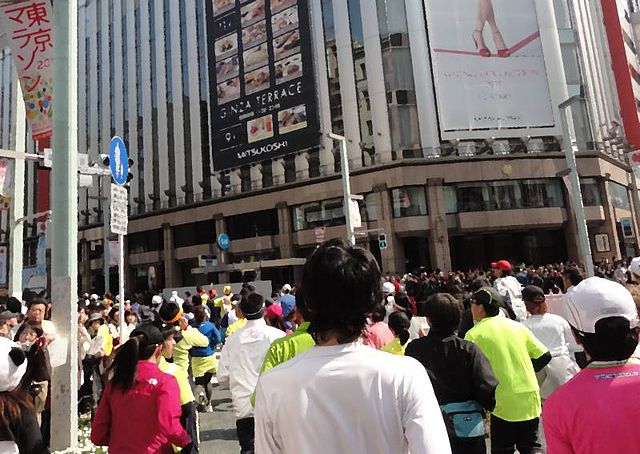
Runneroflife, CC BY-SA 3.0, via Wikimedia Commons
The Tokyo Marathon is one of the Abbott World Marathon Majors (AbbottWMM). The AbbottWMM series is the world championship series for male and female marathoners. Tokyo Marathon, Boston Marathon, TCS London Marathon, BMW BERLIN-MARATHON, Bank of America Chicago Marathon, TCS New York City Marathon, Olympic/Paralympic Marathon, and World Athletics Championships Marathon/ World Para Athletics Championships are among the qualifying races.
22. People in Tokyo greet one another by bowing
Unlike in Western society, bowing, known as ojigi in Japan, is an important etiquette that is taught from a young age. A bow can be a modest nod of the head or a profound bend at the waist, depending on the situation. A deep, extended bow shows respect, while a slight nod is less formal. In Japan, bowing can be used to express feelings such as appreciation, respect, guilt, or gratitude. Bowing is classified into two types: kneeling (zarei) and standing (ritsurei).
Try to just bend your body at the waist and keep your back straight throughout for both of these techniques. If you plan on traveling or working in Japan, learning proper bowing techniques and etiquette will serve you well. But don’t worry about doing it incorrectly. Most Japanese people do not expect foreigners to grasp correct bowing regulations, and they will most likely let you off the hook.
23. Tokyo held the Summer Olympics in 1964 and again in 2021

Bob Ramsak, CC BY-SA 4.0, via Wikimedia Commons
The 2020 Tokyo Olympics, which were postponed until 2021 because of the global COVID-19 pandemic were the second Summer Games to be hosted in Japan, following the historic 1964 Tokyo Olympics, and the third time Tokyo was chosen as a host city—following the unfulfilled 1940 Summer Games. Japan has also held the Winter Olympics twice, once in 1972 in Sapporo and again in 1998 in Nagano.
24. Tokyo boasts the most neon signs of any city on the planet
You could argue that Tokyo is more lighted than Piccadilly Circus or Times Square. It has many more streets than It’s an interesting statistic because neon signs aren’t typically associated with Tokyo. The brilliant lights will captivate you if you visit the Shinjuku district in Tokyo. Neon is abundant, particularly near the west exit of Shinjuku Jr station. The city as a whole has more neon than anywhere else on the planet. Many people assume Las Vegas has more, but they are shocked by Tokyo’s distinction!
25. Tokyo is recognized as the fashion capital of Asia

Dick Thomas Johnson from Tokyo, Japan, CC BY 2.0, via Wikimedia Commons
Tokyo, being one of the world’s most fashionable cities, is a real haven for fashionistas. Many various subcultures with eclectic styles call the city home, including punk, cosplay, Mori Kei, Lolita, and Gyaru. It is well-known for its spectacular fashion and distinct trends. Tokyo is renowned as Asia’s fashion center, and it has given birth to several well-known enterprises around the world. Tokyo’s liveliness and street style are what make it a global leader and influencer. Between the Harajuku ladies in bright dresses and trends throughout Shibuya, Tokyo is a one-of-a-kind destination.
26. Sakura is a rich symbol in Japanese culture
Sakura is widely celebrated in Japanese literature, poetry, and art, and they have multiple meanings. For example, because they bloom so briefly, blooms are sometimes viewed as a metaphor for the fleeting beauty of life. Simultaneously, the joyous ritual of hanami (flower watching) is an old and continuing tradition.
The ritual began with plum blossoms before being almost entirely connected with cherry blossoms by the Heian Period (794-1185). With increased exposure to Japanese art and culture in the nineteenth century, audiences in the United States and around the world adopted Sakura as a distinctively Japanese cultural symbol.
Read also; Top 10 Amazing Facts about the Tokyo National Museum of Nature and Science
27. There are numerous temples and shrines in Tokyo

MIKI Yoshihito, CC BY 2.0, via Wikimedia Commons
Japan has about 150,000 temples and shrines. Temples are Buddhist structures, and shrines are Japanese Shinto structures. Tokyo’s shrines and temples draw thousands of visitors each year. While several have been rebuilt since their inception due to fire, earthquakes, or conflict, many have retained their majesty. Take your time seeing the temples and shrines throughout Tokyo, whether you’re interested in them for cultural or religious reasons. Begin at the Sensoji Temple and the Meiji Shrine.
28. Ginza is widely renowned for being Tokyo’s most affluent retail district
Ginza is Tokyo’s most expensive district. One square meter of land in Ginza is apparently worth more than 30 million yen, and even more than 40 million for commercial buildings! Ginza is widely renowned for being Tokyo’s most affluent retail district.
Although only a few of us can afford to shop at high-end boutiques and have a cup of coffee for $10, Ginza today offers an increasing number of shops, restaurants, and cafés in a variety of price ranges for everyone to enjoy equally. Ginza’s main thoroughfare, “Chuo Dori,” is approximately 1 km long and is restricted to vehicles on weekends so that pedestrians can wander freely.
29. Almost every street in Tokyo has a haunted house
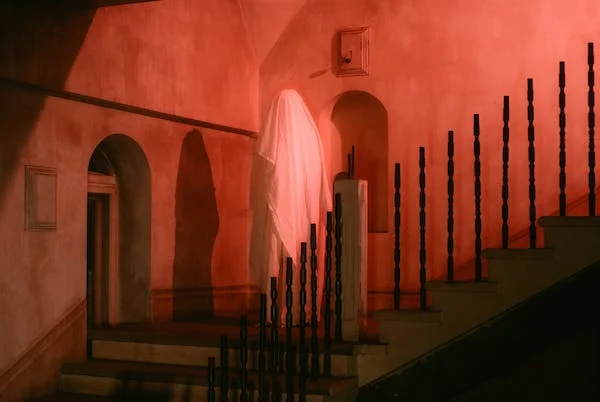
Photo by Daniil Ustinov from Pexels
Houses that are haunted. Ghosts of vengeance. Clowns who kill. Dolls that kill. Are you afraid yet? You could watch these movies and go all the way to the theater on premiere night for that heart-racing experience in third-person point-of-view, or you could acquire a haunted house ticket for that true terror experience in first-person point-of-view. Choose your poison. Although Japan is a tranquil country, paranormal activity has not spared this region. So, if you want to scare yourself, visit some of the top haunted spots in Tokyo. But remember to bring a friend with you when exploring Tokyo’s deadliest spots.
30. The city is made up of 23 Special Wards
When writing an address in Tokyo, whether for a hotel, an Airbnb, or a new home, you may notice the -ku or found after the area, such as Shibuya-ku, Shinjuku-ku, or Meguro-ku. It means special ward’ and is one of the ways Tokyo keeps its city organized. While the city is frequently referred to as the largest in the world, this actually refers to the Greater Tokyo Area; the center’s 23 wards. Tokyo’s 23 Special Wards are termed tokubetsu-ku in Japanese and have local autonomy, similar to boroughs in London and New York. While they cannot enact laws, they have increased fiscal authority and are treated similarly to other sorts of municipalities throughout Japan.
Tokyo’s reputation as one of the safest and most fascinating tourist destinations in the world precedes it. The Japanese city consistently ranks first on global lists of safe cities, and in 2019, Tokyo celebrated eight years of inbound tourism development. In Tokyo, you may immerse yourself in the full range of Japanese arts and culture. Centuries-old types of performing arts continue to be performed on stages, and sumo tournaments draw large crowds.
Planning a trip to Paris ? Get ready !
These are Amazon’s best-selling travel products that you may need for coming to Paris.
Bookstore
- The best travel book : Rick Steves – Paris 2023 – Learn more here
- Fodor’s Paris 2024 – Learn more here
Travel Gear
- Venture Pal Lightweight Backpack – Learn more here
- Samsonite Winfield 2 28″ Luggage – Learn more here
- Swig Savvy’s Stainless Steel Insulated Water Bottle – Learn more here
Check Amazon’s best-seller list for the most popular travel accessories. We sometimes read this list just to find out what new travel products people are buying.

